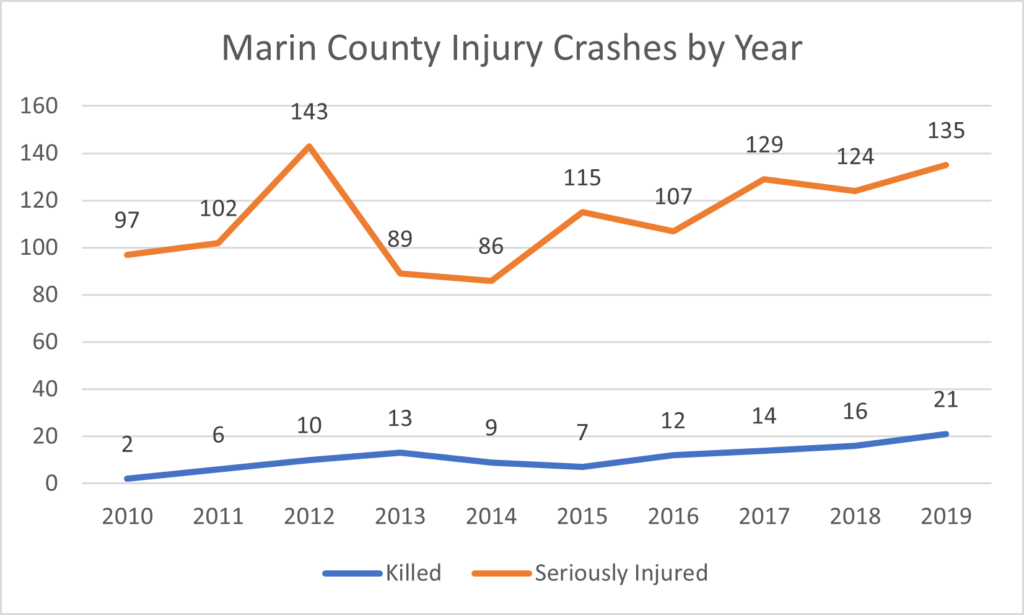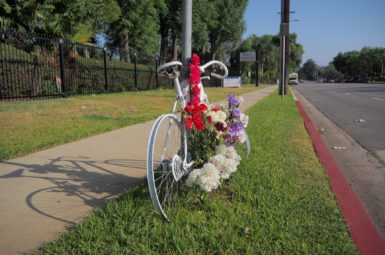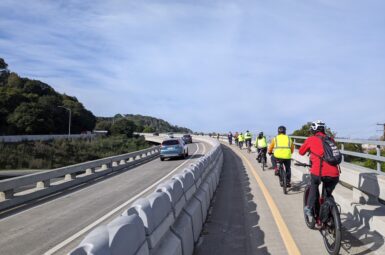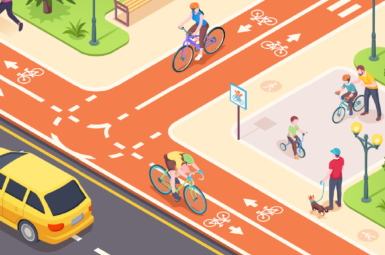Road Safety No More Traffic Deaths In Marin
The United States is in the midst of a crisis of traffic violence. In the first nine months of last year, over 31,000 people were killed in crashes, the most in nearly a generation. Marin County is no exception.
Though there has been a recent drop in crashes on our county’s state highways, the larger trend is clear, with a 10-fold increase in deaths on Marin’s roads in a decade, with two deaths in 2010 to 21 deaths in 2019 (the last
year for which we have complete data).
And while it’s easy to get lost in the numbers, every crash means another grieving family and community. In the last four weeks, at least three people have been killed on roads in unincorporated Marin alone: Pastor Greg Chisholm on Sir Francis Drake Boulevard, Zach Wilhelm on Novato Boulevard, and a solo bicycle crash on Redwood Highway near Strawberry.
This dire toll prompted us to pen an op-ed in the Marin IJ (linked here), which we have shared with the Board of Supervisors and a number of City and Town Council Members across the county. In it, we call on elected leaders of Marin to bring an end to this senseless violence, and resolve to work toward a goal of zero traffic deaths.
In setting such a goal (known typically as Vision Zero), we would not be alone. In fact, the Vision Zero movement is so widespread at this point that Marin is showing itself to be a laggard, falling behind our peers on a commitment to safety. Sonoma County, Napa County, and San Francisco have all pledged to reduce traffic deaths to zero. The same commitment was recently made by the California Department of Transportation (Caltrans) and the United States DOT.
The changed approach
As important as a Vision Zero resolution would be, a pledge alone will not improve safety – real actions have to be taken. Beyond the goal, here is what constitutes the Vision Zero approach.
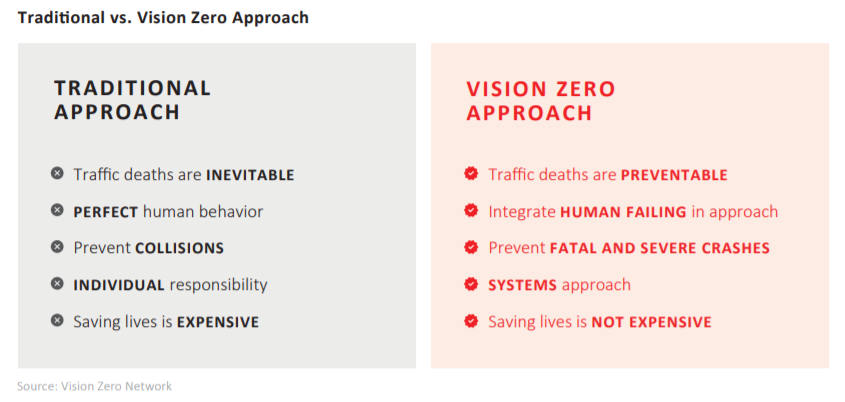 Fundamental to this approach is that deaths and injuries are (1) preventable and (2) not solely the fault of the individual actors. The managers of our transportation network have a crucial role to play in improving safety. If the railing of the Golden Gate Bridge were only two feet high, many people would fall off the deck. We could merely shrug or spend time blaming them for inattention or poor balance, or we could simply raise the railing.
Fundamental to this approach is that deaths and injuries are (1) preventable and (2) not solely the fault of the individual actors. The managers of our transportation network have a crucial role to play in improving safety. If the railing of the Golden Gate Bridge were only two feet high, many people would fall off the deck. We could merely shrug or spend time blaming them for inattention or poor balance, or we could simply raise the railing.
What can be done
What does “raising the railing” look like? There isn’t enough time to touch on every single change we need, but here are a few:
-
Physical separation between high-speed traffic and vulnerable road users (either protected bike lanes or separate paths)
-
Curtail through-traffic on neighborhood streets
-
Implement traffic calming near schools and at trail crossings
-
Install red light and speed cameras at dangerous intersections
-
Lower speed limits and narrow traffic lanes to discourage speeding
-
Improve nighttime lighting
Something all of these share, is that we need to stop treating speed and congestion as the most important factor in our transportation sector. Getting somewhere on-time is important, but not as important as getting there safely. We would never tolerate an airline whose pilots skipped their pre-flight checklists to take off faster; we should demand the same attention to safety from those who manage our roadways.
Who this helps
This isn’t just about protecting current bicycle riders. As Secretary of Transportation Pete Buttigieg made clear in the recently-published National Roadways Safety Strategy, unsafe streets have a “chilling effect” on people’s choices to walk and bike. Fully half of Marin adults say that they would like to bike more than they do. What’s stopping them? They don’t feel safe.
Lastly, safer streets wouldn’t just benefit bike riders, but all road users. They would benefit people like Elida Delgado Rodriguez, a senior who was killed in a crosswalk in Downtown San Rafael, and people in cars, like Zach Wilhelm, who make up the majority of road deaths.
How we can make this happen
We have already shared our opinion with the Board of Supervisors, but they need to hear from their constituents as well. You can use the links below to tell your supervisor that you want to see them make a Vision Zero resolution.
District 1 – Damon Connolly (San Rafael, Terra Linda, Santa Venetia)
District 2 – Katie Rice (Greenbrae, Larkspur, Ross, San Anselmo, Fairfax)
District 3 – Stephanie Moulton-Peters (Sausalito, Marin City, Mill Valley, Tiburon)
District 4 – Dennis Rodoni (West Marin, Corte Madera, San Rafael Canal)
District 5 – Judy Arnold (Novato, Bel Marin Keys, Hamilton)
Thank you for your support. We’ll keep you posted on other opportunities to advocate for improved safety in Marin.
sign-up for advocacy alerts
We will continue to need your help to win improvements like these! Please sign-up for advocacy alerts using the form below and we’ll tell you when/how to support our efforts.
members make it happen
We’re working to make Marin more bike-friendly for people of all ages and abilities. Are you with us?
